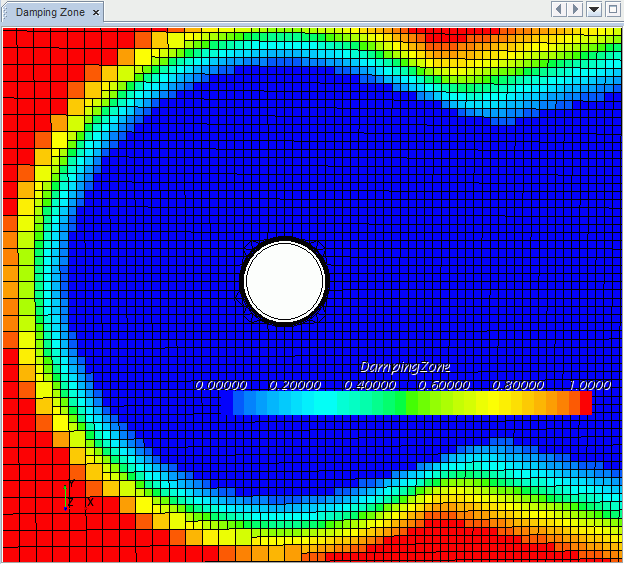Reducing Spurious Acoustic Reflections
This section describes how to suppress acoustic reflections from outside the noise source zone.
For practical applications, the flow mesh is typically coarsened away from the region of interest. A strong vortical flow crossing through this mesh transition in the downstream region can generate spurious acoustic waves that propagate upstream. These spurious acoustic waves interfere with those inside the noise source zone, resulting in erroneous results.
You typically use a field function (fdamp) to suppress acoustic reflections from outside the noise source zone. This field function must return a value of 0 within the noise source zone, and a value of 1 at the boundaries of the flow domain. Within the transition from 0 to 1, you can apply a Hanning windowing modifier Eqn. (272) to give a smooth transition.
An example of a damping field is illustrated below.

In this example, there is a strong left-to-right air flow which generates acoustic waves by vortex shedding from the cylinder. The region of interest (in blue) is undamped and everywhere else is fully damped (in red). Note the fine mesh throughout the undamped zone and the damping that is applied at the mesh transitions.
The recommended points per wavelength (PPW) must be maintained inside the undamped zone.
For more information on the recommended PPW, see Guidelines for Using the Acoustic Wave Model.